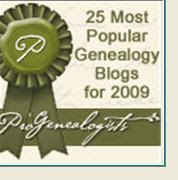Barbara Burstin, author of "Steel City Jews: A History of Pittsburgh and its Jewish Community, 1840-1915," says that Cincinnati was a more enticing destination than Western Pennsylvania for a practical reason.
The author is a Long Island native who moved from Connecticut to Pittsburgh's Squirrel Hill more than 30 years ago. She took on the project writing the history of the city's early Jews."You couldn't get here very easily from the East," says Burstin, a historian who teaches history at the University of Pittsburgh and Carnegie Mellon University. "There was no train connection from the East, so (Jews) went to other cities much further west."
"I enjoyed talking to people," she says. "I enjoyed the research. It was like being a detective and ferreting out clues, trying to understand the path these people took."According to Burstin, a few Jewish peddlers showed up in the 1840s, selling on Pittsburgh streets. It wasn't until 1846 that the first Jewish institution - Troy Hill Cemetery - was organized by William Frank, David Strassberger and Emmanuel Reis. The first synagogue - Shaare Shamayim (Gates of Heaven) was founded in 1848.
The story details mid-19th century Pittsburgh Jewish life and where the families migrated in the area. Some went to the North Side, known as Allegheny City, across the river. The Ridge Avenue area was favored by the rich and affluent. West of Ridge Avenue, now known as Manchester, attracted many Jewish families from the 1850s-1870s. The Sheffield Street area was popular and the community began to divide along ethnic lines.
"I talk about a 'Tale of Two Cities,' '' Burstin says. "You have the German Jews who had come earlier and had some degree of success. And you had Eastern European Jews, who were quite poor, arriving. ... There was a real chasm between the two of them, in many ways."Congregations and organizations were formed. In the 1880s, a train stop in the Hill District was the impetus for that area to begin to thrive. In the 1890s, it became the immigrant Jewish community's neighborhood, although the area was mixed and diverse people lived there.
The demographics changed in the early 1960s following the construction of the Civic Arena, and the Jewish population left for Squirrel Hill and elsewhere.
Burstin is currently writing another book on Pittsburgh Jewish history from 1915.
Read the complete article at the link above.





































Very interesting! I used to live in Squirrel Hill, and now live in Cincinnati, very close to the Hebrew Union College.
ReplyDelete